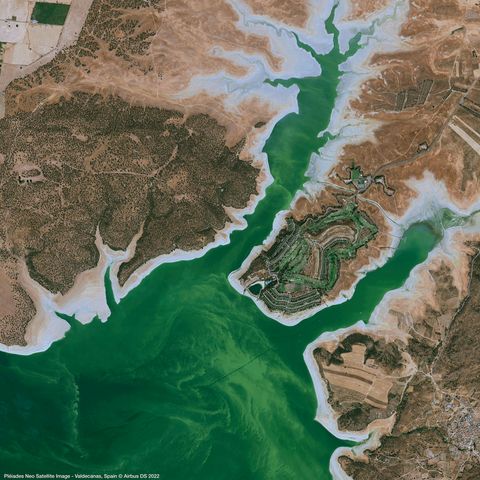Sustainable Aviation Fuel, explained to kids

Building on its “Future of the Skies” educational content series, the Airbus Foundation Discovery Space’s “Sustainable Aviation Fuel-SAF” content series introduces kids to a proven alternative fuel that can reduce lifecycle CO2 emissions compared to conventional fuel.
Flying to a sustainable future
When today’s kids come of age, our skies will look a lot different. For one thing, they may be filled with a multitude of planes that soar to new heights without any emissions. And the new fuels and technologies that could power them – from fuels made of algae and waste to hydrogen – are already in the works.
SAF is just one of the aerospace industry’s decarbonisation solutions that can be used in both in-service fleets today and the flying fleets of tomorrow.
So what is Sustainable Aviation Fuel? Why is it a better solution than fossil fuel? And how can these complex concepts be explained so that kids can understand them?
The Airbus Foundation’s Discovery Space programme has set its sights on addressing those very questions with “Flying to a sustainable future”, the latest chapter of the “Future of the Skies” content series aimed at kids aged 8 to 12 years old. It includes the following:
- Four animations that explain key topics using characters kids have already met from previous editions
- 2 activities - to be done alone or accompanied by an adult.
“Our aim is to provoke kids’ imaginations with content that gets them thinking about today’s critical challenges.” says Rachel Schroeder, Managing Director of the Airbus Foundation. “This new chapter highlights how advances in science can be explained with simple examples from everyday life. We think children will be motivated to pursue learning about science, the environment and climate change through such content.”
“Flying to a sustainable future”: Benefit starts today
SAF is another star of this content series. And for good reason: It gives an impressive reduction of up to 80% in carbon emissions over the lifecycle of the fuel compared to the traditional jet fuel it replaces, depending on the sustainable feedstock used, production method and the supply chain at the airport. It is a complement to Hydrogen.
Kids can also find interesting points to give free run to their imagination.
Each of the four episodes explains a key topic and inspires kids to think critically about them. These topics include the following:
- Sustainable Aviation Fuel (SAF): kids learn about the impact of today’s jet fuel on the environment. They also discover why alternative options, like SAF, are needed for the betterment of our planet. Then kids are challenged to think about things that could be used to produce SAF?
- An existing solution: In the second episode, the kids learn how SAF can be used in current and future aircrafts. They are then encouraged to think about what could be changed about aircraft to make them friendlier for our planet?
- Better Fuel: In this third episode, kids learn that, when an aircraft flies on fossil fuel, CO2 is released into the air. When it uses SAF, CO2 gets into the air too! So… Why is SAF better? Kids are then asked: Can you find something in your house that uses CO2 to grow?
- Making SAF: This final episode outlines a way to produce SAF. Kids are then motivated to think about recycling and reuse.
Custom content for educators and parents
Since 2018, the Airbus Foundation Discovery Space programme is helping educators and parents to engage with their children and students on STEM topics.
For educators, the "Future of the skies" series can help give new impetus to their science classes dedicated to explaining SAF as an alternative to conventional fuels, especially in these times of energy crisis. Likewise, it can also contribute to their students' better understanding of STEM importance in daily life.
For parents, the series can provide an after-school educational activity or a fun family leisure time. It can also help foster family discussion about how science and technology can lead to rewarding and meaningful careers in the future, as children begin to think about how they can put their talents and imaginations to work in the service of protecting our planet.
All of the content included in the series is produced in four languages: English, French, German and Spanish. These animations will be progressively shared on the Airbus Foundation Discovery Space’s social media channels, from YouTube to Twitter, and on a web platform.
This new chapter highlights how advances in science can be explained with simple examples from everyday life.
Rachel Schroeder, Managing Director, Airbus Foundation



